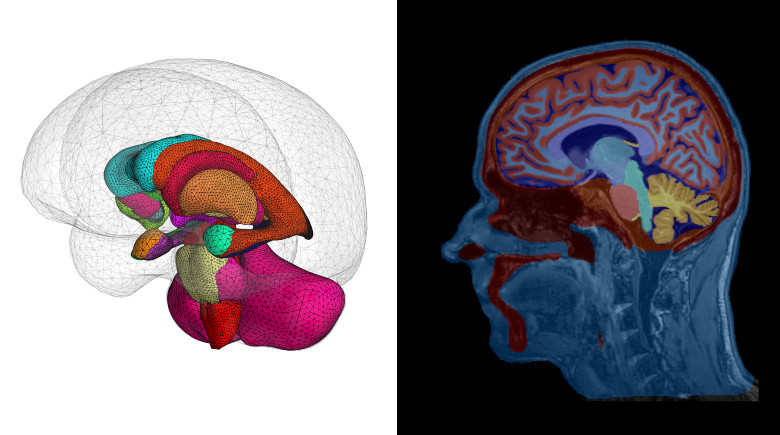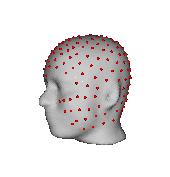
Electrical Source Imaging is a technique that estimates cortical sources responsible for scalp potentials measured by EEG electrodes. Electrical activity is modeled and reconstructed by formulating a forward problem that describes how electrical currents generated by the cortex travel to the scalp, and solving an inverse problem to estimate cortical sources responsible for measured scalp values. In addition to precise brain segmentation and identification of tissue conductivities, forward model construction requires accurate registration of EEG electrode positions to the computational volume. This work presents a novel sensor registration algorithm based on a fully-automatic shape-constrained deformable head model in which brain structures represented as triangular meshes are adapted to match local contrast at anatomical boundaries. The novelty of the proposed method lies in the encoding of electrode locations on the scalp mesh of the head model, which adapts automatically to patient-specific MRI scans. Quantitative comparison with a state-of-the-art GPS-based sensor registration is provided. The GPS-based sensor registration involves two steps. First, the electrodes have to be localized on the patient’s scalp in 3-D. Second, the obtained electrode locations have to be aligned, or registered, to the MRI scan. The latter requires manual landmark selection, which is often problematic in areas of the scalp surface that are flat and lack reliably identifiable anatomical landmarks and surface detail. Experimental results indicate that inaccuracies in manual landmark selection can lead to large registration error (2 to 18 mm). Our method not only avoids both of these steps, but also automates the sensor registration process. This work also evaluates the effect of spatial sensor noise on an individual head model and an atlas. Quantitative results from this study demonstrate that automatic sensor registration is feasible and suggests that fully-automatic ESI from HD EEG can benefit regular EMU patients without intruding on the established clinical workflow.

